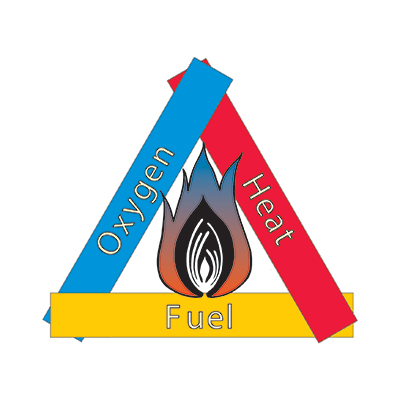Last updated: December 30, 2020
Lesson Plan
Meeting the Fire Triangle

- Grade Level:
- Upper Elementary: Third Grade through Fifth Grade
- Subject:
- Science
- Lesson Duration:
- 60 Minutes
- Common Core Standards:
- 3.SL.1, 4.SL.1, 5.SL.1
Essential Question
What are the three components of the Fire Triangle?
Objective
By the end of the lesson, students will be able to: construct a geometric triangle, name the components of the Fire Triangle, explain that removal of one component of the Fire Triangle extinguishes the fire.
Background
Fire can occur only if oxygen, fuel, and heat are available. These three components are called the “fire triangle.” This activity is from the USDA Forest Service “Fire Lab” curriculum. Find more wildfire lesson plans on this USFS website. The educational FireWorks trunk and materials that go with this curriculum are available from the Glacier Education Specialist.
Preparation
- Gumdrops (12+ per student team)
- Toothpicks (12 per student team)
Procedure
- Explain that fire has occurred in forest communities for hundreds of years. To understand more about fire in nature, they will first learn more about fire itself.
- Ask students to work in groups of three or four.
- Explain: Each student team should build three or four shapes out of gumdrops and toothpicks. Write them on the board: 3-sided (triangle), 4-sided (in this case, a square), 5- sided (pentagon), and 6-sided (hexagon). Use the toothpicks for the sides and gumdrops for the corners.
- Ask students to find out which shape is the most “stable” one, that is, it keeps its shape even when you push on a side or a corner. Unless they eat all the gumdrops, it won’t take long for them to decide that the triangle is the most stable.
- Instruct students to convert their shapes to triangles. Ask students what happens when one leg of a triangle is removed: “It collapses”
- Explain: Scientists use the idea of a “triangle” to describe fires because it needs three things to keep burning. Can they think of what is needed? List their thoughts on the board. Look for items relating to ignition sources, fuel, and oxygen.
- Display the Fire Triangle image. Explain that these are the three things needed to start a fire and keep it going, and relate the components on the triangle to students’ ideas on the board.
- Ask what happens when one of these components is removed from a fire. (It stops burning.) Ask: Burnable things surround us every day. Why aren’t they on fire? (An external source of heat is usually needed to start a fire. Once a fire has started, it produces the heat needed to continue burning. A fire can be put out if fuel, oxygen, or heat is removed.)
- Ask how people can use this knowledge to stop a fire that occurs in their homes and in wildlands. (When you throw water on a fire, you cut off oxygen and remove heat. You can also cut off oxygen by throwing dirt on a fire. “Stop, drop, and roll” reduces the supply of oxygen to a fire. Running away would do the opposite—add more oxygen—so it is a bad idea. Fire extinguishers remove heat and deprive a fire of oxygen. Fire retardant dropped from airplanes removes heat and cuts off oxygen from wildland fires. When all the wax is gone from a candle or all the fuel is burned in a campfire, it goes out.)
Extension
- Make and decorate your own paper fire triangles.
- Read about people’s feelings about fire in Legends of Earth, Air, Fire and Water. These stories would be fun to read to the whole class.
Assessment Materials
- Name the three things needed for a fire to occur.
- Explain to a partner and demonstrate how “stop, drop, and roll” removes something from the Fire Triangle and puts a fire out.
- Closure: Collapse the triangles completely by eating the gumdrops and throwing the toothpicks away.
